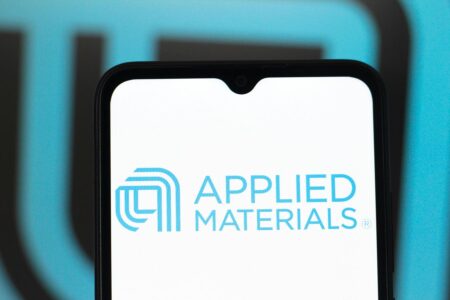In late January, the Chinese AI research lab DeepSeek unveiled its open-source and highly efficient AI model, DeepSeek-R1. This development disrupted the AI landscape and led to a significant yet short-lived sell-off in Nvidia stock (NASDAQ:NVDA). At one point on January 27th, Nvidia stock saw a decline of as much as 17% in response to the news. The R1 model demonstrated performance on par with more established models such as OpenAI’s O1 and Meta’s Llama AI, while being more cost-effective and resource-efficient. This situation was perceived as a potential threat to Nvidia stock, as reduced computational needs could lead to a deceleration in GPU demand growth. However, Nvidia stock quickly recovered as the market reevaluated its long-term outlook, although it continued to face renewed pressure amid the escalating tech trade war between the U.S. and China. Now, as the headwinds seem to be diminishing, some reports indicate that DeepSeek’s upcoming model, known as R2, may be nearing its launch. Should Nvidia investors be concerned?
If you’re looking for gains with lower volatility compared to individual stocks, the Trefis High Quality portfolio offers an alternative, having outperformed the S&P 500 and generated returns exceeding 91% since its inception.
DeepSeek’s Innovations
DeepSeek’s models prioritize software-centric resource optimization over hardware reliance. These optimizations lead to significantly lower costs in comparison to conventional large language models. The R1 model was able to achieve competitive performance with minimal computing capacity, powered by these advanced methodologies. DeepSeek improved communication between chips, employed memory-conserving strategies, and utilized reinforcement learning to lessen resource requirements. This cost-effectiveness is evident in the API pricing for DeepSeek-R1, which charges only $0.55 per million input tokens and $2.19 per million output tokens, drastically undercutting OpenAI’s API prices of $15 and $60, respectively. See How DeepSeek’s AI Model Affects Nvidia Stock.
What Might R2 Offer?
The forthcoming R2 model is reportedly being developed with a hybrid Mixture-of-Experts (MoE) architecture, which segments an AI model into various sub-networks that activate selectively based on input. This methodology could significantly lower computing costs further during pre-training and facilitate enhanced inference performance. The model is reported to feature a total of 1.2 trillion parameters, making it up to 97.3% less expensive to train compared to OpenAI’s GPT-4o [].
DeepSeek is reportedly training R2 using Huawei’s Ascend 910B chips instead of Nvidia GPUs. Systems constructed with Ascend chips have achieved up to 91% efficiency when compared to a similar-sized Nvidia A100-based cluster. Additionally, DeepSeek is said to be developing a local hardware supply chain to further minimize its dependence on U.S.-manufactured chips. This is a departure from the R1 version, which reportedly utilized tens of thousands of Nvidia’s H100 and H200 GPUs for model training, despite facing U.S. export limitations. While Chinese companies have encountered challenges in obtaining Nvidia chips, they have allegedly sourced them through third-party nations like Singapore and Malaysia to evade these restrictions. If DeepSeek successfully transitions to using Chinese chips, it might prompt other major tech companies in China to do likewise.
What Does This Mean For Nvidia?
Over the last two years, firms have invested substantial resources into developing AI models, leading to an increase in Nvidia’s revenue by more than 125% in FY’24 to $61 billion, with net margins approaching 50%. Revenue grew further to over $130 billion in FY’25. If the sector begins to adopt DeepSeek’s model of open-source development, we might witness a decrease in demand for AI computing power. Additionally, if chips from companies like Huawei are utilized more effectively through DeepSeek’s innovative coding, it could allow businesses to broaden their demand away from Nvidia’s increasingly expensive chips. That said, more efficient and streamlined models could also have an opposite effect, benefiting Nvidia to some extent. Efficient models that reduce computational demands might democratize access to AI, attracting new users and applications, which could ultimately enlarge the overall demand. We currently value Nvidia stock at approximately $101 per share, which is roughly 10% lower than the existing market price. See our analysis of Nvidia valuation: Expensive or Cheap for further insights.
Discover more about the Trefis RV strategy that has outperformed its all-cap stocks benchmark (which includes all three, the S&P 500, S&P mid-cap, and Russell 2000), thereby delivering strong returns for investors. Additionally, if you desire potential upside with a smoother experience than an individual stock, consider the High Quality portfolio, which has outshined the S&P and achieved >91% returns since its inception.
Read the full article here
















